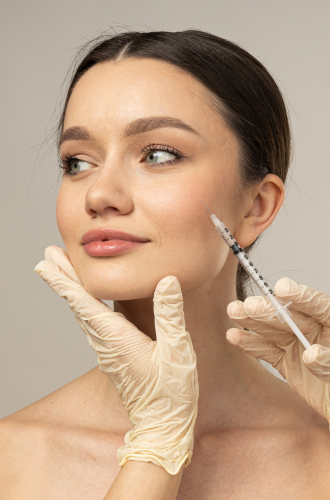- Jl. Gatot Subroto Barat, Denpasar Utara
Botox Treatment
- Home
- Botox Treatment
Botox Treatment
Botox, a popular term in the realm of cosmetic treatments, refers to a brand of botulinum toxin type A. It is widely known for its ability to reduce the appearance of facial wrinkles, but its uses extend beyond cosmetic enhancements. Approved by the U.S. Food and Drug Administration (FDA), Botox has a range of medical applications, making it a versatile and invaluable treatment option in modern medicine. This article delves into the history, applications, benefits, and potential risks associated with Botox.
The journey of Botox from a deadly toxin to a medical marvel is fascinating. Botulinum toxin, produced by the bacterium Clostridium botulinum, was initially known for causing botulism, a rare but severe illness characterized by muscle paralysis. In the 1970s, researchers began exploring its potential therapeutic uses, particularly in treating strabismus (crossed eyes) and blepharospasm (uncontrolled blinking). By 1989, the FDA approved Botox for these conditions.

Our Motive is Helping Patients From Around the Globe
Botox’s primary cosmetic application is in the treatment of facial wrinkles. It is particularly effective in addressing dynamic wrinkles, which are caused by muscle movements.

Cosmetic Applications
Beyond cosmetics, Botox has numerous medical applications. Some of the FDA-approved uses include:
- Chronic Migraine: Botox injections can help prevent headaches in patients with chronic migraines, defined as having 15 or more headache days per month.
- Hyperhidrosis: Excessive sweating, particularly in the underarms, hands, and feet, can be treated with Botox. The toxin blocks the nerves responsible for activating sweat glands.
- Overactive Bladder: Botox can reduce urinary incontinence by relaxing the bladder muscles.
- Cervical Dystonia: A condition characterized by involuntary muscle contractions in the neck and shoulders, leading to abnormal postures and pain.
- Spasticity: Botox can treat muscle stiffness and spasms associated with conditions like cerebral palsy, multiple sclerosis, and stroke.
In addition to these approved uses, ongoing research continues to explore new therapeutic applications for Botox, including treatment for depression, wound healing, and certain gastrointestinal disorders.
